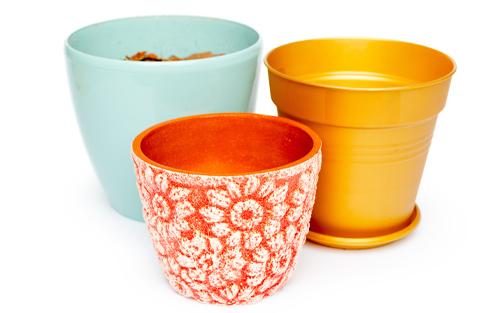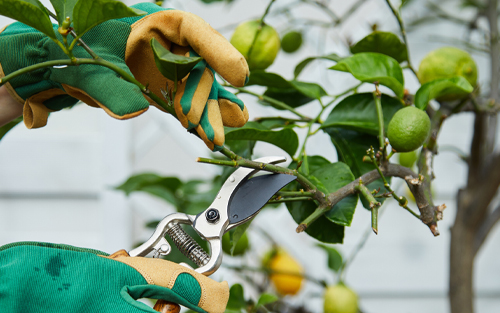By Nellie Palmer
A citrus tree can provide amazing and nutritious fruit that you can simply pick, peel, and eat. This enticing idea often leads people to wonder if citrus can be grown in a pot or container.
The answer is yes. With a sunny spot and a large pot, you can grow lemons, oranges and more.
Step One: Choosing Your Citrus Tree
Some larger or standard sized citrus varieties can be challenging to grow for long periods in containers due to their eventual size and vigorous root growth. Dwarf varieties typically grow to a mature height of about twelve feet tall, and are far better suited to the container life. Some dwarf varieties include Dwarf Persian Lime, Dwarf Improved Meyer Lemon, and Dwarf Moro Blood Orange. Calamondin Oranges and Kumquats are also great specimens of citrus to grow in a pot at home. Dwarf citrus can be pruned to even smaller stature if necessary. Choose the best tree for you, and then follow these remaining steps to successfully grow your own containerized citrus trees.

Step Two: Choosing The Pot For Your Citrus Tree
New, young citrus trees come in small, but often deep, nursery pots. When you are selecting a pot to move your new tree into, choose one that is slightly larger than the pot the tree came in. All new pots that you use to grow citrus must have adequate holes in the bottom for drainage. A basic starting point for most new container grown citrus is a three-gallon sized pot. Three-gallon pots are usually about nine inches in diameter and ten inches tall. A new tree can typically live in this size pot for up to two years. At two years, when roots appear at the drainage holes, move the tree up to a six or seven gallon pot. As long as the next container is at least two inches bigger by depth and circumference, it will be fine. Re-pot your tree in this manner every two years until you reach a container size of about twenty gallons. Plastic nursery pots are durable and light, while clay or fiberglass pots can be more attractive, but heavier to move.

Step Three: Potting Your Citrus Tree
When you are ready to pot your tree, place enough well draining soil in the bottom of the pot to position the surface of the new tree’s root ball about two inches below the pot rim. Remove the original pot and inspect the root ball. Cut away any obviously dead roots or roots that have grown into extreme coils within the pot. If the roots are densely packed, loosen them by gently prying them apart. There is no need to fully untangle the roots. Simply loosen them a bit if needed. Begin to fill the pot with soil and fully cover the root system. Stop at the halfway point, water the soil and then continue to fill the container the rest of the way. Fill the soil up to a point where the surface of the tree’s previously potted root ball is at the level of the new soil. Leave about two inches of space between the top of the soil and the pot rim. This will allow you to water the tree properly. Do not bury the root ball deeply, or stack soil over the trunk base. Water the newly potted citrus tree well and let it drain.
Step Four: Watering Your Potted Citrus Tree
Citrus roots like moist but not soggy conditions. The watering needs of citrus are different when they are in pots because the roots will dry out more quickly. Use a moisture meter to determine when its time to water. Water until it begins to drain out of the drain holes. Pay attention to the foliage. Leaves that are wilted and perk up after watering are a sign of roots that have been allowed to dry out too much. Water more often. Yellow or curled leaves that do not improve after watering may mean they are getting too much water, so water less.
Step Five: Citrus Trees Need Regular Fertilizer
The more frequent watering required, the more your fertilizer will wash through the soil. Use slow-release granular citrus fertilizers that contain trace minerals like iron, zinc and manganese. Follow the label instructions for amounts needed. Yellow leaves can be a sign of lack of fertilizer.

Step Six: Prune Dead Branches
Prune in the spring, after the chance of freeze has passed and before new growth appears.
For more information on growing potted citrus trees, go to growinginthegarden.com and find tips from Angela Judd, Master Gardener



